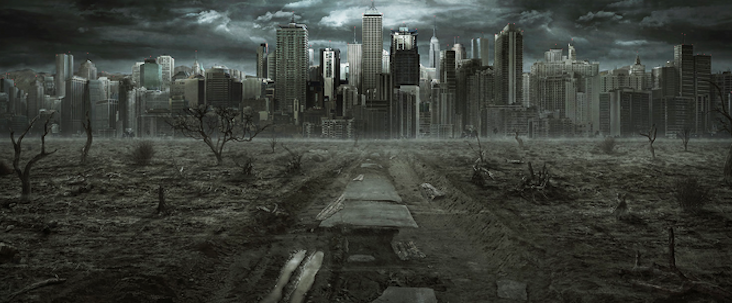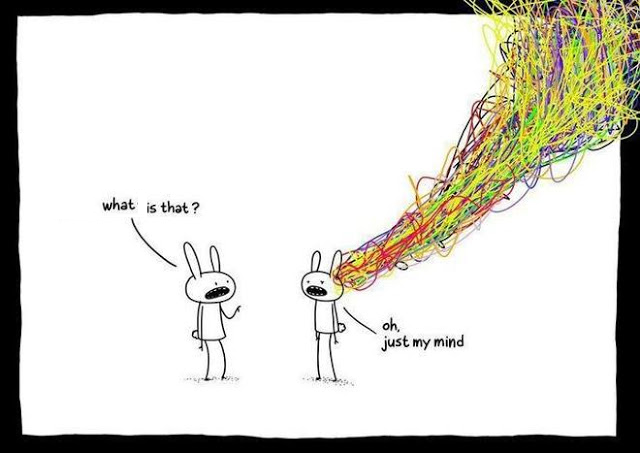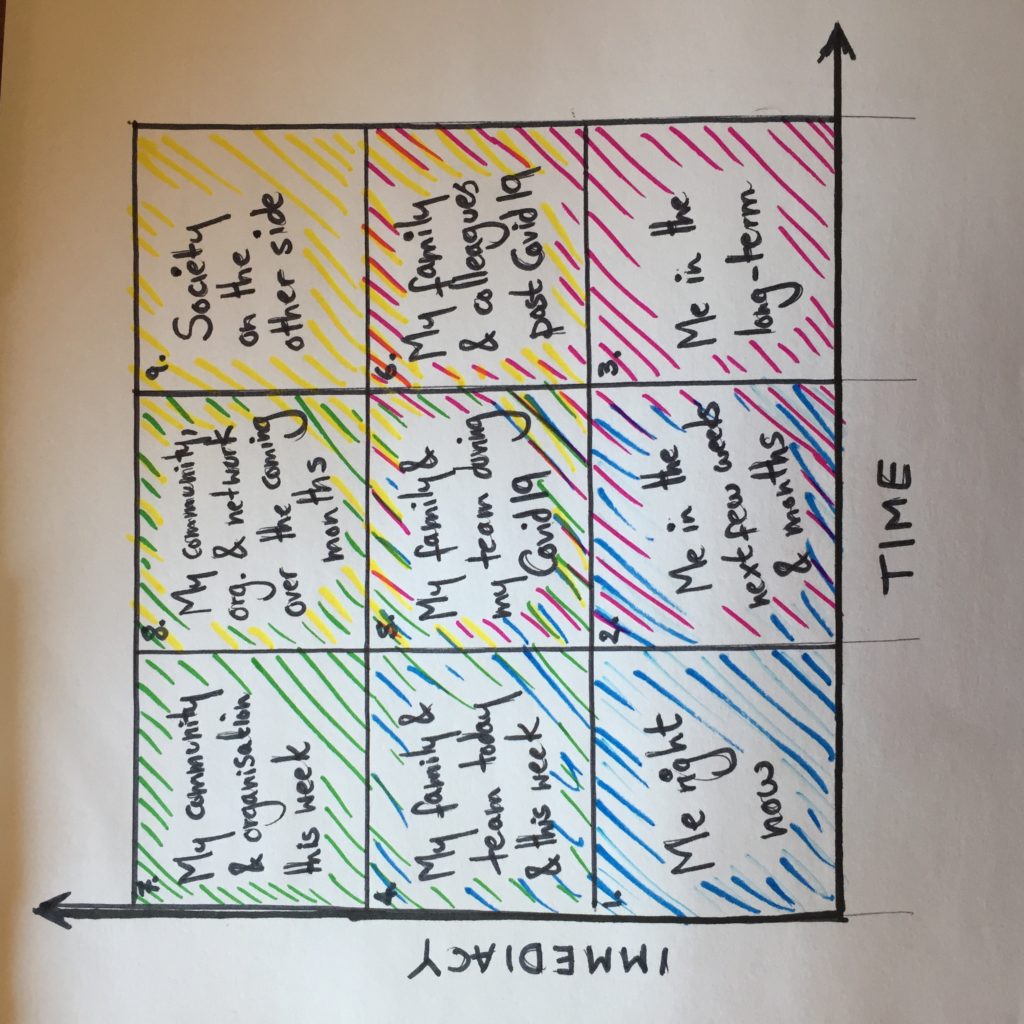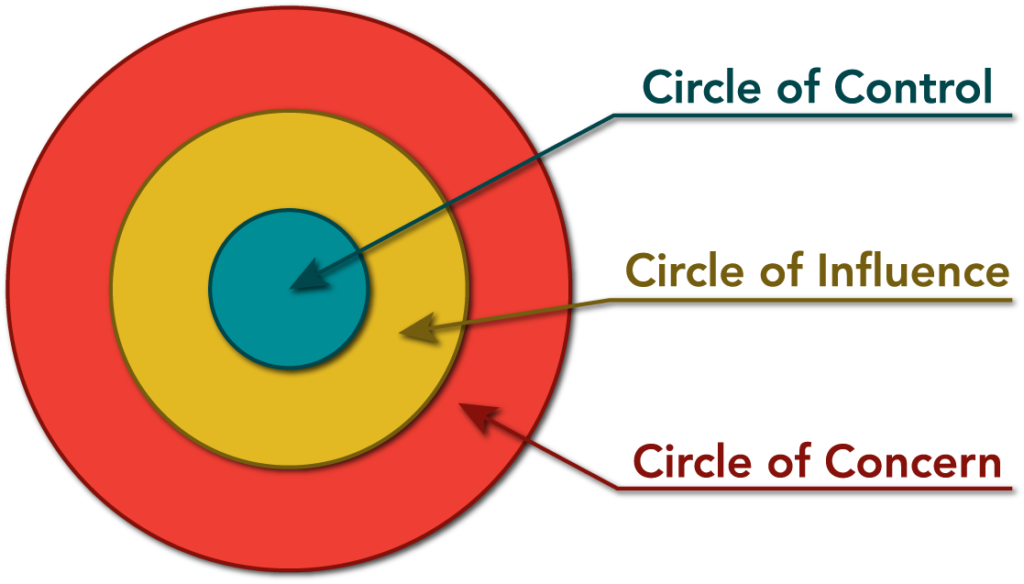What to do with your head during lockdown
Some thoughts on partitioning your mental time and energy.

How do you utilise your focus in a healthy, structured manner when confronted with so many unknowns and so much uncertainty?
Haven’t these last few weeks been a challenge? Your brain is always on, your thoughts are always directed towards something. In your normal day you get presented with a million places to direct your thoughts, a myriad of people, tasks, adverts, devices all battling for your attention;, you probably long for some peace ….now you may well have it. It might not be that peaceful.

How do you direct your ‘always on’ brain somewhere healthy and helpful?. It’s like carrying around a chain gun that’s always firing – you’re highly likely to just blow a lot of holes in a lot of stuff with nothing productive as the outcome.
I’ve created a model that’s really helped me. It’s about pausing, to proactively choose where to focus your thoughts. Less ‘chain-gun’ more ‘laser’. It might help you too.
A Shrinking World
“We spend less time alone with our brain than any humans before us.” I’d like to tell you where that quote comes from but I’m on lockdown away from my collection of books, and, as yet, the internet hasn’t provided me with an answer.
It is highly likely that your current lockdown experience is confronting you with more time, in a fixed physical space, to be confronted with your own thoughts. Maybe many of those thoughts are confused, repetitive, fearful, optimistic and focused on the unknown. So what do you do with your mental time and energy in this new space? What do you do with your head during lockdown?
Let’s start with this: everyone’s experience of the global changes due to Covid19 is different. Some people are flat-out busy, some are bored; some are in a tiny space on their own, some are with in-laws, friends, colleagues; some are familiar with remote working, some not, some can’t. Some aren’t in lockdown at all, they are caring, curing, delivering, fixing, creating.

A friend, immunocompromised, lives in a small London flat, on his own, with no outdoor space and is an analyst for a healthcare company. He will be in that space, overloaded with work, for 3 months. A colleague writes from her home, on the back of a Cornish beach. Pre-Covid19 her routine was writing at the laptop, walks with the dogs, quiet reflection …her normal life is the same, but her head may be in a completely different space.
And this is it, our physical and mental lives are transformed, there is a truckload more uncertainty and change to manage and our mental responses are likely to be wildly different too.
Personally I’ve been panicked, lost, optimistic, serene. I’ve been focused on playing with my son, on the fate of the human race, on the cost/benefit of globalisation, on the reshaping of leadership requirements and on what to eat next …sometimes all at once. Some of the places you may cognitively visit in this wild fluctuation of focus and energy, may be useful, pragmatic, optimistic places …some may be darker, challenging and exhausting skirmishes in your own mind.

What do you do with your head during lockdown?
As many of us have, I’ve been working out what the new normal might be. I’ve been reaching out to old friends, colleagues and people who help me think. I’ve also been coaching my clients, and supporting my NHS contacts wherever I can. But I’ve also hung in there, limpet-like, when my brain’s been spinning like a top – I’ve been trying to understand where my mental energy is going and which of those mental destinations is useful, helpful and healthy.
If this inner pin-balling is a familiar mental space, if you’re trying to hold thoughts about the future of human civilisation, today’s stats on the local deaths, your ‘To Do’ list for work and a menu for the week, all in your head at the same time, I think I may have something to offer.

Mental Models:
Here’s my proposition.
Firstly we tend to cycle our thoughts across a variety of timescales, from the immediate to the long-long-term. I am really anxious now, I know, I’ll watch Gavin & Stacey and distract myself …and will we get to go on our October half-term trip Portugal? …and will this be another 10 years of austerity? Dealing with all these timeframes at once is exhausting, especially when the unknowns are orders of magnitude larger than they were a month ago.
Secondly we also shift the boundaries of our thought, from very individualistic to global. From focusing on the self…. I need exercise, I don’t like living with you, why won’t you watch the films I like, to thinking about my family, my team at work, my best friends. To thinking about what Covid19 means for my industry, my country or even the human race. Again, a draining range to cover, full of more uncertainty.
It’s too hard to try to hold this big a range of thoughts in your head all at once. So I’ve dropped these two big variables into the X and Y axis, respectively, of a simple grid. The aim of this model is to section off your thinking into discrete areas where some progress can be made, tasks created, and lines drawn under successes. I’ve made it a 9 box grid but there’s no reason the model couldn’t contain more divisions and be a 16 box, 25 box or 36 box grid.
Here it is…

This is my language and my boxes, you may find the word ‘Immediacy’ unnecessary and want to replace it with something simpler like ‘people’ or ‘networks’. You may also want to rewrite the box content to suit you and the reality you operate in.
The important factor here is reflection and then considered action.
How to use the grid:
Stop and reflect.

This is meant to be a model that you use to consider how and where you are spending your mental time and energy, and how useful that is. The first thing to do is to notice which boxes are taking up your effort. Don’t judge it, just notice where your mental calories are getting burnt. It’s really important not to beat yourself up, think of this more like bookkeeping or diary planning, you’re getting a big picture view of what’s happening, not deciding what’s good and bad.
As an example, I’ve been spending a lot of time in boxes 1, 4 and 9. How anxious am I? Are my family OK today? What will happen to humanity, especially the poorer members of society in the long run?
Secondly, notice if there are boxes you are ignoring. I spend no time in box 3 or 6 at the moment.
This isn’t a chance to give yourself a kicking over your unhealthy thoughts, it’s a chance to reflect and shift your efforts to more useful spaces.
Then make a decision on which boxes you could spend useful, healthy time and energy. To share my experience I’ve been messaging my sister about her 40th birthday party next March (box 6) and looking at the work I’ve got planned for autumn 2020 and spring 2021 and reframing my goals there (box 3). I’ve also been offering free coaching to NHS contacts who are on the frontline (box 7).
In my experience this works best if I do it for 5-10 minutes every few days. Either first thing, or at lunchtime. And certainly not just after reading the news, facebook, a raft of emails or a flood of WhatsApp messages.
So:
- Reflect on where you are spending time and energy.
- Reflect on what boxes are being underserved.
- Notice how useful and healthy it is spending that time and energy.
- Select which areas you could spend some useful, meaningful time and energy on.
- Resolve to make progress in that area and then draw a line under that small success.
- Use the CIC Model below to help.
- Give yourself a break-, we are hardwired to find uncertainty stressful, and routine and familiarity relaxing. There is very little of any of these right now: anxiety is the expected response …initially.
There is a really useful analogy here that a colleague shared last week. In a previous life he was a divemaster, and had to complete underwater rescue training. You can do a lot of damage trying to quickly move someone who is in distress underwater and the rescue training teaches you to start by doing nothing! …STOP, Breathe, Think ….and only then Act.

This process fits perfectly here; this is about being proactive with our mental time and energy, not reactive. It will be fatiguing to have your mental energy driven by BBC News, WhatsApp, FaceBook or even the anxieties of the people you’re locked in with. Stop, breathe, reflect and then decide what you want to do with your mental energy.
To illustrate the point, I was coaching a client last week who was so under the pump he was tempted to cancel coaching. We shifted the timings around and made an hour for it at the end of the working day. At the conclusion of the session he said “That was really helpful. I didn’t think I could spare an hour, but really needed some time to process and reflect, I’ll make this hour up in spades now – thanks”.
This is a good point to stop. Take a few calming breaths and run the first part of the process. What markers make sense to you on the grid? Is it day, week, month ….or week, month, year on the Time Axis? What makes sense for you on the Immediacy Axis? Me, my family, my town? or My team, my company, my industry? There’s nothing here to stop you creating a different grid for work and for home. Don’t get too wedded to getting it perfect, you’ll only see what works through using it.
Now take another pause. Maybe a cuppa before you come back to it. Stage 2 is, box by box, where are you spending time & energy? Where are you spending no time? Don’t criticise yourself, just notice. You may also suddenly be aware of how quickly you flit between them and how scattered your approach is.
Great. You may have already begun to notice that there could be some productive mental time and energy spent in a box you’ve been neglecting. Hopefully the process of pausing, reflecting and deciding where to go next is useful in and of itself.
Concern-Influence-Control:
I’ll offer one additional model before I sign off. This one layers really well on top of the model above. Unlike the model above I did not create this one, it’s an often used model and highly useful.
Here it is:

The same reflection process can be used to great effect here. This is about recognition of whether you’re focusing on elements that you have any control over or not. Focusing on the elements in the Circle of Concern often leads to wishing that world was different …. it isn’t!
We all spend time in the Circle of Concern, these are often things that effect us greatly. But, by definition, there is nothing you can do about these elements. Accepting that they are the way they are, that your reactions to them is probably understandable and rational may all help. But the shift needs to be inward, towards the Circle of Influence and Circle of Control. What can you do? Who can you help? Who can you work with?
To link back to my examples from Model 1- I am worried about my family who are miles away with Covid19 symptoms. This is a valid worry. I don’t reprimand myself for it, but I do phone daily, I do send them videos of my son having a whale of a time playing with Daddy, and I do send movie and online video suggestions. I also start to kick around ideas for my sister’s next birthday when she isn’t on lockdown.
So I’m noting my concern about my family’s well being this week (that’s box 4 in the grid). Then I’m shifting from concern to influence and action; I can’t make them well but I can check in on them, I can cheer them up (or my toddler can) and I can source useful entertainment / distractions for them.
This process works for each of the boxes. Here’s two more very short examples.
Examples:
Box 8. I’m concerned about some of my clients over the next month or so. I decide to send them all an email with nothing more than to ask them how they are. I follow up with a second email a few days later offering my support (free or reduced) to help with their immediate challenges.
Box 3. I’m concerned about the future of my work and therefore finances, will anyone want face-to-face group leadership development in 2020? …in 2021? So I move to control and influence. I spend 2hrs working through my personal and company finances and project what we need if I have £0 income in 2020. I then contact everyone who has work booked in with me this year and ask them to give me a gauge, if possible, on whether this work will go ahead, postpone or cancel.

Both of these were productive, healthy ways to spend time. Both were specific to one box and moved from Concern to Influence and/or Control.
This is also a really useful model to run when you are in conversation with others about the current situation. By all means spend some time sharing concerns – the cathartic experience is useful, but move the conversation towards influence and action. “Isn’t it horrible thinking about all the old people who can’t go out? Have you called Anne on your street and checked she’s OK? You could drop some essentials off for her or even write her a little letter.” Concern to Control.
I hope the above is useful. I’ve certainly found it a helpful model to refocus my mind and give some structure to the inner turmoil with this much uncertainty in the air. I’ve also returned to it a number of times as the days become more or less challenging.
I would really love to hear your thoughts on the information above, your tactics for healthy usage of your own mental time and energy. If any of you use this model please tell me how, and what the impact is.
Be well, wash your hands, this too shall pass!


About the author